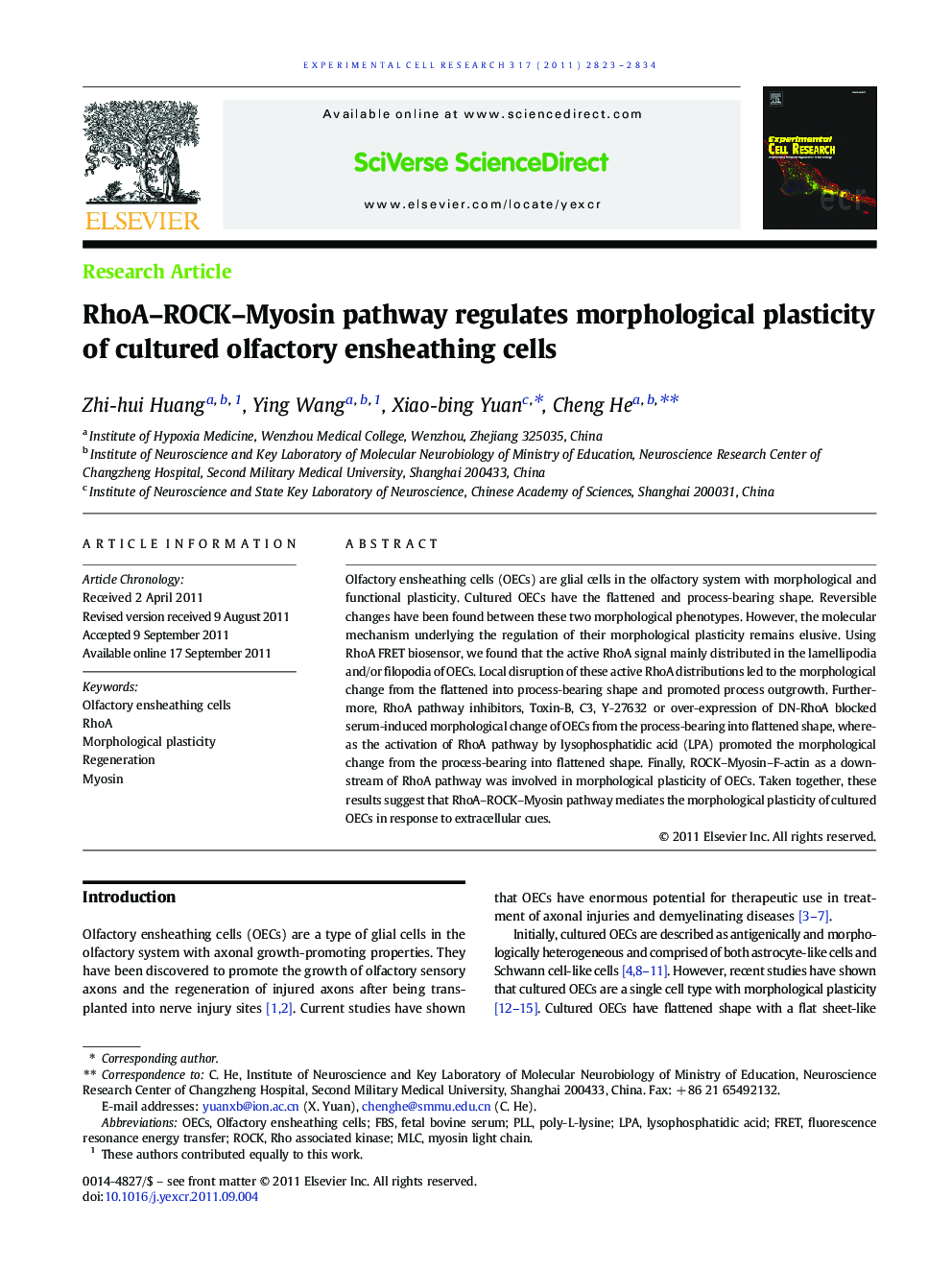| Article ID | Journal | Published Year | Pages | File Type |
|---|---|---|---|---|
| 2131215 | Experimental Cell Research | 2011 | 12 Pages |
Olfactory ensheathing cells (OECs) are glial cells in the olfactory system with morphological and functional plasticity. Cultured OECs have the flattened and process-bearing shape. Reversible changes have been found between these two morphological phenotypes. However, the molecular mechanism underlying the regulation of their morphological plasticity remains elusive. Using RhoA FRET biosensor, we found that the active RhoA signal mainly distributed in the lamellipodia and/or filopodia of OECs. Local disruption of these active RhoA distributions led to the morphological change from the flattened into process-bearing shape and promoted process outgrowth. Furthermore, RhoA pathway inhibitors, Toxin-B, C3, Y-27632 or over-expression of DN-RhoA blocked serum-induced morphological change of OECs from the process-bearing into flattened shape, whereas the activation of RhoA pathway by lysophosphatidic acid (LPA) promoted the morphological change from the process-bearing into flattened shape. Finally, ROCK–Myosin–F-actin as a downstream of RhoA pathway was involved in morphological plasticity of OECs. Taken together, these results suggest that RhoA–ROCK–Myosin pathway mediates the morphological plasticity of cultured OECs in response to extracellular cues.
